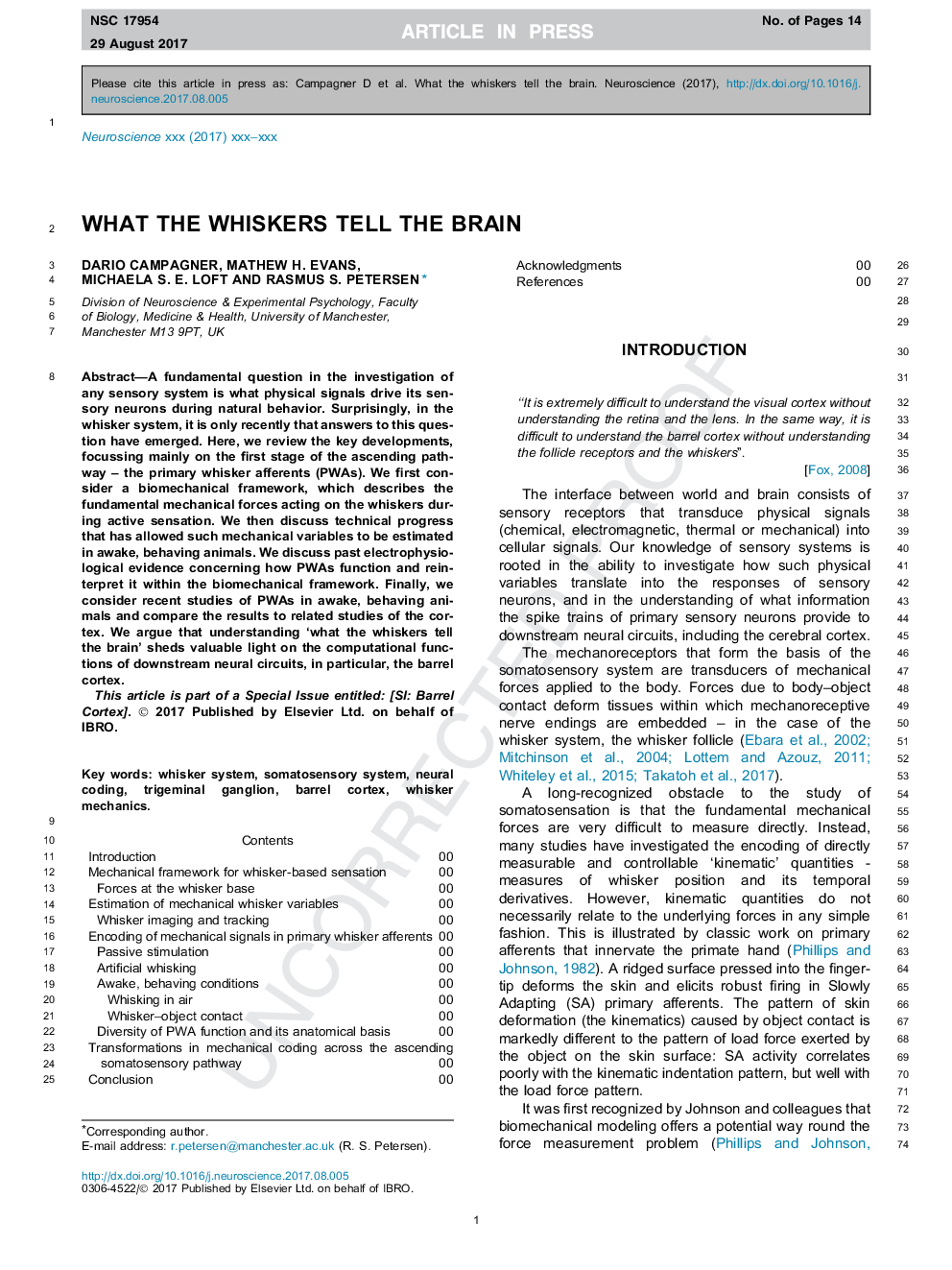| Article ID | Journal | Published Year | Pages | File Type |
|---|---|---|---|---|
| 8841205 | Neuroscience | 2018 | 14 Pages |
Abstract
A fundamental question in the investigation of any sensory system is what physical signals drive its sensory neurons during natural behavior. Surprisingly, in the whisker system, it is only recently that answers to this question have emerged. Here, we review the key developments, focussing mainly on the first stage of the ascending pathway - the primary whisker afferents (PWAs). We first consider a biomechanical framework, which describes the fundamental mechanical forces acting on the whiskers during active sensation. We then discuss technical progress that has allowed such mechanical variables to be estimated in awake, behaving animals. We discuss past electrophysiological evidence concerning how PWAs function and reinterpret it within the biomechanical framework. Finally, we consider recent studies of PWAs in awake, behaving animals and compare the results to related studies of the cortex. We argue that understanding 'what the whiskers tell the brain' sheds valuable light on the computational functions of downstream neural circuits, in particular, the barrel cortex.
Related Topics
Life Sciences
Neuroscience
Neuroscience (General)
Authors
Dario Campagner, Mathew H. Evans, Michaela S.E. Loft, Rasmus S. Petersen,
